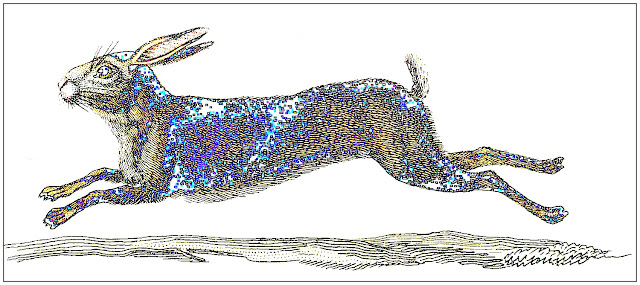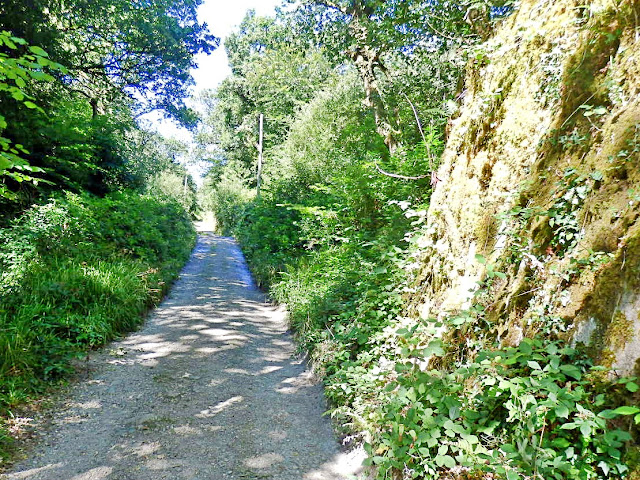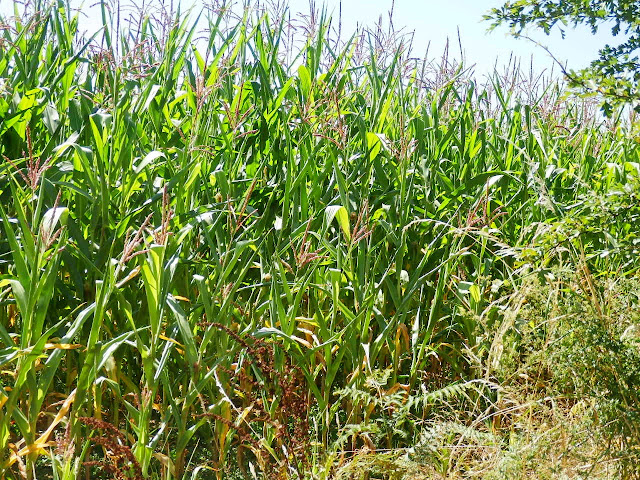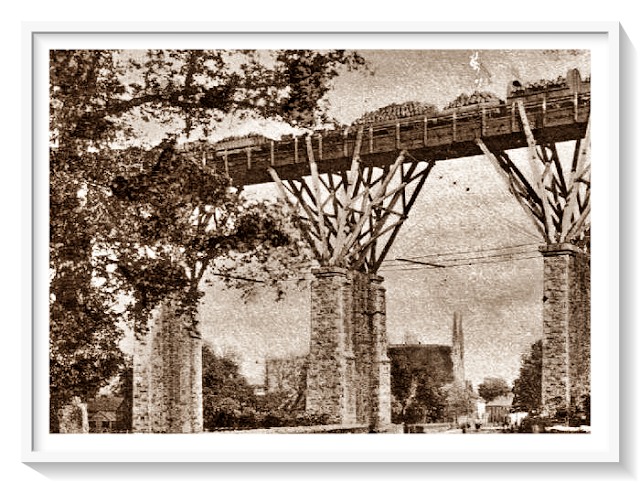Hello again, it's been a strange old week for me and I haven't been able to get out far with my camera.
The photos are from a short walk I managed along the Gover Valley. You may remember a few weeks back I walked the full Gover Valley walk.
This time the small river was much more attractive, you could almost hear the piskies going about their work. That is, of course, if you believe in piskies.
Anyway, today I'll fill the post with a traditional Cornish story from the early 1800's. The story is in it's original form.
THE OLD STORY OF THE WHITE HARE
THE OLD STORY OF THE WHITE HARE
It is a very popular fancy that when a maiden, who has loved not wisely but too well, dies forsaken and broken hearted, she comes back to haunt her deceiver in the form of a white hare.
This phantom follows the false one everywhere, mostly invisible to all but him. It saves him from danger, but invariably the white hare causes the death of the betrayer in the end.
Here is one such story told in the old fashioned way.
A large landed proprietor engaged a fine, handsome young fellow to manage his farm, which was very extensive as well as a high class one.
When the young farmer was duly settled in his new farmhouse, there came to live with him, to take care of the management of the dairy, a peasant's daughter. She was handsome, and of a singularly fine figure, but entirely without education.
The farmer became desperately in love with this young creature, and eventually their love passed all the bounds of discretion. It became the policy of the young farmer's family to put down this unfortunate passion by substituting a more legitimate and endearing object. After a long trial, they thought they were successful and the young farmer married.
Many months had not passed when the discharged dairymaid was observed to suffer from illness, which, however, she constantly spoke of as nothing; but knowing dames saw too clearly the truth. One morning there was found in a field a newly born babe, strangled. The unfortunate girl was at once suspected as being the parent, and the evidence was soon sufficient to charge her with murder. She was tried, and chiefly by the evidence of the young farmer and his family, convicted of, and executed for, the murder.
Everything now went wrong in the farm, and the young man suddenly left it and went to another part of the country.
Still nothing prospered, and he gradually took to drink to drown some secret sorrow. He was frequently on the road by night than by day; and go where he would, a white hare was constantly crossing his path. The white hare was often seen by others, almost always under the feet of his horse; and the poor terrified animal would go like the wind to avoid the strange apparition.
One morning the young farmer was found drowned in a forsaken mine; and the horse, which had evidently suffered extreme terror, was grazing near the corpse. Beyond all doubt the white hare, which is known to hunt the perjured and the false-hearted to death, had terrified the horse to such a degree that eventually the rider was thrown into the mine-waste in which he was found.
THE END
This phantom follows the false one everywhere, mostly invisible to all but him. It saves him from danger, but invariably the white hare causes the death of the betrayer in the end.
Here is one such story told in the old fashioned way.
A large landed proprietor engaged a fine, handsome young fellow to manage his farm, which was very extensive as well as a high class one.
 |
When the young farmer was duly settled in his new farmhouse, there came to live with him, to take care of the management of the dairy, a peasant's daughter. She was handsome, and of a singularly fine figure, but entirely without education.
The farmer became desperately in love with this young creature, and eventually their love passed all the bounds of discretion. It became the policy of the young farmer's family to put down this unfortunate passion by substituting a more legitimate and endearing object. After a long trial, they thought they were successful and the young farmer married.
Many months had not passed when the discharged dairymaid was observed to suffer from illness, which, however, she constantly spoke of as nothing; but knowing dames saw too clearly the truth. One morning there was found in a field a newly born babe, strangled. The unfortunate girl was at once suspected as being the parent, and the evidence was soon sufficient to charge her with murder. She was tried, and chiefly by the evidence of the young farmer and his family, convicted of, and executed for, the murder.
Everything now went wrong in the farm, and the young man suddenly left it and went to another part of the country.
Still nothing prospered, and he gradually took to drink to drown some secret sorrow. He was frequently on the road by night than by day; and go where he would, a white hare was constantly crossing his path. The white hare was often seen by others, almost always under the feet of his horse; and the poor terrified animal would go like the wind to avoid the strange apparition.
One morning the young farmer was found drowned in a forsaken mine; and the horse, which had evidently suffered extreme terror, was grazing near the corpse. Beyond all doubt the white hare, which is known to hunt the perjured and the false-hearted to death, had terrified the horse to such a degree that eventually the rider was thrown into the mine-waste in which he was found.
THE END
Thanks for visiting my blog, hope you have a good week ahead. Good wishes ~ Mike.























































































